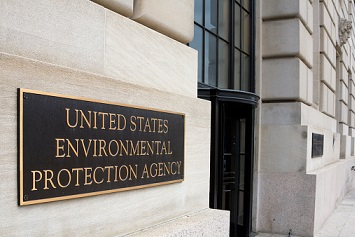A new memo from Susan Bodine, the EPA’s assistant administrator for the Office of Enforcement and Compliance Assurance (OECA), suggests that the Agency will continue to revamp its enforcement activities by placing a stronger emphasis on compliance assistance.
In the memo, the most salient evidence of this trend is Bodine’s decision to change the title of the Agency’s National Enforcement Initiatives (NEI) program to the National Compliance Initiatives (NCI) program. The transition will rework some of the priorities of the eight current national priorities (currently termed NEIs) for 2017–2019, which were named in February 2016 by the Obama EPA. The memo summarizes the OECA’s selection criteria for the next series of initiatives, which will cover 2020–2013.
Drop in Enforcement
The EPA has selected NEIs every 3 years to focus its resources on national environmental problems where there is significant noncompliance with laws and where federal enforcement efforts can make a difference. In the February 2016 announcement, the Agency also stated that it intended to rework its compliance activities by utilizing new tools through what it called Next Generation Compliance.
A significant decrease in the Agency’s enforcement actions followed Donald Trump’s election. Overall, during its first year, the Trump EPA initiated about 50 percent fewer enforcement cases and assessed about 50 percent fewer in penalties when compared to the first year of each of the Clinton, G.W. Bush, and Obama administrations; the drops reflect reductions in actions taken mainly under the Clean Air Act (CAA) and Clean Water Act (CWA).
More Engagement with States
The memo states that in the new NCIs, the OECA will make four important adjustments:
- Modify selection criteria for the fiscal year (FY) 2020–2023 NCI cycle to better align with Agency Strategic Plan measures and priorities.
- Engage more fully with states and tribes in the selection and development of the initiatives.
- Enhance the EPA’s use of the full range of compliance assurance tools in an NCI.
- Extend the priorities cycle to 4 years to better align with the Agency’s National Program Guide cycle.
One objective in the EPA’s January 2018 Strategic Plan is to “improve environmental protection through shared governance and enhanced collaboration with state, tribal, local, and federal partners using the full range of compliance assurance tools.” The memo follows up on this objective by stating that the EPA will provide new opportunities for early and meaningful input from states and tribes at several key points in the [NCI] process.
“The EPA looks forward to receiving state and tribal input on the current NEIs—such as whether to continue, modify, or conclude them—and suggestions for new NCIs,” states Bodine.
According to the Environmental Council of the States (ECOS), the states “currently perform the vast majority of environmental protection tasks in America, including more than 90 percent of the enforcement and compliance actions.”
Selection Criteria
The memo lists the following selection criteria for the 2020–2013 NCI:
- Alignment with Strategic Plan measures to address CAA nonattainment areas; impaired waters; public health threats posed by drinking water noncompliance; populations vulnerable to air toxics or chemical accidents; and children’s exposure to lead. “OECA will emphasize selecting new NCIs that advance our progress in meeting Strategic Plan measures and priorities,” says Bodine.
- Need for EPA expertise, authority, or resources—states or the EPA may determine that the EPA’s expertise, authority, or resources are needed to improve compliance. Examples may include remedying violations where states lack the authority or the expertise; sharing technologies; providing national compliance assistance tools; or creating data analytic tools to identify serious environmental problems or disproportionate adverse impacts to public health.
- Need to address serious and widespread noncompliance across the country. “While a noncompliance problem may not be present in every EPA region or state, it may be so common that a national focus is necessary to remedy the noncompliance to maintain certainty for regulated entities through a level playing field and a consistent level of environmental and public health protection across our country,” says Bodine.
NEIs to Be Modified
The memo also indicates that the EPA will modify the 2017–2019 NEIs in keeping with the revised emphasis on compliance assistance. For example, the OECA intends to remove the initiative to prevent animal waste from contaminating surface and groundwater from the list of national priorities and return it to the Agency’s “core program.” Other existing NEIs will be combined or scaled back, the memo states.

